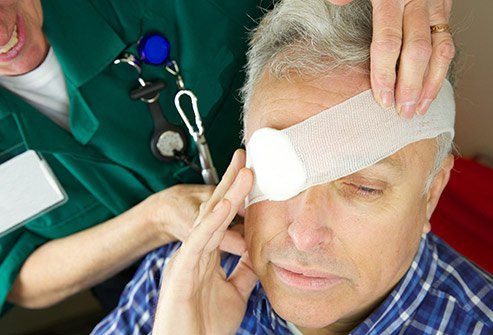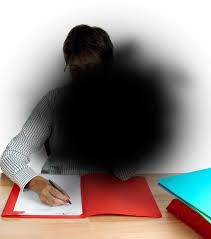Definition
The conjunctiva is a thin, transparent layer that covers the sclera (white part of the eye) and lines the inner surface of the eyelids. A conjunctival laceration is an injury to this membrane, resulting from collisions or scratches. While the exact incidence of conjunctival laceration is not well-documented, ocular injuries overall occur at a rate of 8 to 13 per 1,000 people.
Causes
Conjunctival lacerations can result from both blunt and sharp trauma. Blunt trauma might involve collisions with objects like tables, floors, balls, or hands. Sharp trauma can be caused by nails, eyelashes, metal particles, plant materials, and similar objects.
It is crucial to recognize that conjunctival lacerations can be part of more severe injuries, such as those affecting the interior of the eyeball.
Risk Factor
Risk factors for conjunctival laceration often relate to the nature of the causative objects. For instance, metal particles and plant materials are associated with occupations involving metal processing or plant handling. Additionally, statistical data indicates that men in their 20s are more frequently affected, possibly due to the nature of their work. Injuries may also occur due to violent fights.
Symptoms
Symptoms of conjunctival laceration typically include mild eye pain and a pronounced sensation of a foreign object in the eye. The sclera may appear red if injured, and the wound itself can sometimes be visible.
The conjunctiva is rich in blood vessels, so bleeding between the conjunctiva and sclera is common. The affected area of the eye may also appear swollen and watery. Importantly, conjunctival lacerations generally do not impair vision since they do not affect the eye's visual function.
Diagnosis
Medical Interview
When you visit a doctor, they will inquire about the circumstances of the eye injury, such as the cause, speed, and size of the object involved. The doctor will also look for signs of deeper injuries, including possible penetration of the eyeball.
Eye Examination
The doctor will conduct a series of tests, including visual acuity, visual field, and light reflexes, to ensure the injury is confined to the conjunctiva. An examination of the inner eye may be performed using tools like a fundoscope or slit lamp to assess the clarity of the fluid inside the eye, which should remain clear if only the conjunctiva is lacerated. Additionally, the doctor may use dyes to check for any fluid leakage from the interior of the eye.
Diagnostic Tests
Given that conjunctival lacerations are often caused by foreign objects, the doctor may recommend examining the wound for bacteria or fungi. This may involve cultures to determine the most effective treatments. Imaging studies, such as CT scans or eye ultrasounds, may be conducted if there is suspicion that foreign objects have penetrated the eye. MRI is generally avoided if metallic objects are involved due to safety concerns. This detailed approach ensures accurate diagnosis and appropriate management of conjunctival lacerations, considering the possibility of associated complications and the need for specialized treatments.
Management
The management of conjunctival lacerations varies based on the size, depth, causative objects, and presence of infection. Small and shallow wounds often heal on their own. For wider but shallow lacerations, an eye specialist may suture the wound to promote better healing. Surgical intervention might be necessary, particularly if the laceration involves deeper structures of the eye.
Antibiotic Treatments
Regardless of the wound characteristics, antibiotics are typically prescribed to prevent infection. Doctors often provide antibiotic ointments for application at night or as advised. The choice of antibiotics may be influenced by the results of bacterial and fungal cultures taken from the wound. Additionally, medications to alleviate pain and reduce inflammation may be prescribed.
Wound Treatments
Follow-up visits are crucial to monitor the wound's progress. Regular check-ups help ensure the wound is healing properly and not worsening. Most conjunctival lacerations heal within a few days. If there is no improvement after a week or if new symptoms arise, further medical evaluation is recommended. Untreated conjunctival lacerations can lead to long-term effects, infections, and even blindness.
Tetanus Vaccination
Tetanus vaccination might be recommended, especially if your vaccination history is unclear. Clostridium tetani, the bacteria causing tetanus, can adhere to foreign objects that cause conjunctival lacerations. Without prevention, tetanus can manifest within approximately two weeks.
Complications
Complications from conjunctival lacerations can include infections such as conjunctivitis. If the laceration extends deeper, it can lead to infections of the eyeball (endophthalmitis) or the inner layers of the eye (uveitis). These complications are more common in injuries caused by plant particles, often affecting those working in agriculture.
Prevention
Preventing conjunctival lacerations involves the use of personal protective equipment, particularly protective eyewear. Protective glasses are essential during activities like sports to prevent direct impacts to the eyes. For motorcyclists, helmets with face shields provide eye protection while riding. Regularly trimming nails can also reduce the risk of self-inflicted conjunctival lacerations.
When to See a Doctor?
Seek immediate medical attention if you experience a foreign object sensation, red eye, or visible wound in the eye. Delays can lead to complications such as infections, potentially resulting in blindness. If you have been treated for a conjunctival laceration and develop new symptoms, consult a doctor promptly for further evaluation and management.
Looking for more information about other diseases? Click here!
- dr Ayu Munawaroh, MKK
- dr Hanifa Rahma
Gidens, G. (2020). Conjunctival Laceration. Retrieved 27 October 2021, from https://www.uhd.nhs.uk/uploads/about/docs/our_publications/patient_information_leaflets/Eye_Department/Conjunctival_Laceration_042-21.pdf.
Giri, G. (2018). Corneoscleral Laceration: Background, Epidemiology, Prognosis. Retrieved 27 October 2021, from https://emedicine.medscape.com/article/1195086-overview#showall.
Rathi, A., Sinha, R., Aron, N., & Sharma, N. (2017). Ocular surface injuries & management. Community Eye Health Journal, 29(99), S11-S14.












